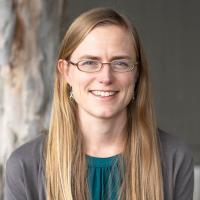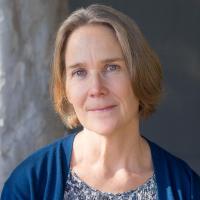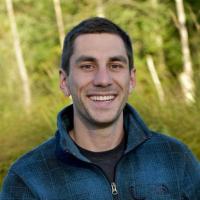Watershed Science & Management
Our Team in the Watershed Science & Management
The San Francisco Estuary Institute comprises over sixty scientists, technologists, and designers who offer a wide range of expertise. Each team member, in her or his own way, helps to define environmental problems, advance public debate about them through sound science, and support consensus-based solutions that improve environmental planning, management, and policy development.
Projects Related to the Watershed Science & Management
 RipZET: A GIS-based Tool for Estimating Riparian Zones
RipZET: A GIS-based Tool for Estimating Riparian Zones
The Riparian Zone Estimator Tool (RipZET) is a decision support tool developed by the San Francisco Estuary Institute and Aquatic Science Center for the California Riparian Habitat Joint Venture and the California Water Resources Control Board to assist in the visualization and characterization of riparian areas in the watershed context.
 Sediment for Survival
Sediment for Survival
This project analyzes current data and climate projections to determine how much sediment may be available for tidal marshes and mudflats and how much sediment may be needed under different future scenarios. By combining these forecasts with scientific knowledge of natural physical and biological processes, we offer a strategy for sediment delivery that will allow these wetlands to survive a changing climate and provide benefits to people and nature for many decades to come.
 Healthy Watersheds Resilient Baylands
Healthy Watersheds Resilient Baylands
Through the EPA-funded Healthy Watersheds Resilient Baylands project, SFEI and sixteen partner organizations are developing multi-benefit tools to enhance climate change resilience in San Francisco Bay. Healthy Watersheds Resilient Baylands has two major components: Multi-benefit Urban Greening and Tidal Wetlands Restoration. Through both components, we have developed strategies that inform policy, planning, and design of innovative implementation projects.
 Tijuana River Valley Historical Ecology Investigation
Tijuana River Valley Historical Ecology Investigation
The Tijuana River Valley Historical Ecology Investigation synthesized hundreds of historical maps, photographs, and texts to reconstruct the the ecological, hydrological, and geomorphic conditions of the valley prior to major European-American landscape modification.
 Russian River Watershed Projects at the San Francisco Estuary Institute
Russian River Watershed Projects at the San Francisco Estuary Institute
Our projects in the Russian River Watershed help us to understand our past, understand our present, and envision our future. Learn more about what SFEI is doing in partnership with others to advance our scientific understanding of this valuable landscape.
 Baylands Ecosystem Habitat Goals Project
Baylands Ecosystem Habitat Goals Project
SFEI's Letitia Grenier served as lead scientist of the Baylands Ecosystem Habitat Goals Project, which yielded a report called The Baylands and Climate Change: What We Can Do. The report is an update to the 1999 Baylands Ecosystem Habitat Goals, which for the first time set comprehensive restoration goals for the San Francisco Bay estuary. Produced by a collaborative of 21 management agencies working with a multi-disciplinary team of over 100 scientists, it synthesizes the latest science—particularly advances in the understanding of climate change and sediment supply—and incorporates projected changes through 2100 to generate new recommendations for achieving and sustaining healthy baylands ecosystems.
 Upper Penitencia Creek: Historical Ecology Assessment
Upper Penitencia Creek: Historical Ecology Assessment
Upper Penitencia Creek, on the eastern side of Santa Clara Valley, has locally significant potential for stream restoration and anadromous fish recovery. The Upper Penitencia Creek Historical Ecology Assessment documents aspects of Upper Penitencia Creek's hydrogeomorphology and riparian ecology prior to major Euro-American modification. It describes the historical (ca. 1850) channel alignment, dry season hydrology, and riparian corridor of the creek as interpreted from early maps, textual records, and photographs.
 Head of Tide
Head of Tide
SFEI completed a pilot study focused on creating a framework for a rapid protocol that can be used to delineate the current and future head of tide zone for San Francisco Bay tributaries using both “desktop” and field investigations.
 Salmon Habitat Quantification Development
Salmon Habitat Quantification Development
The Chinook salmon habitat quantification tool is a science-based approach for use by restoration planners to evaluate existing or potential habitat across spatially- and temporally-variable floodplain inundation conditions in the process of planning, designing, and implementing restoration and management activities.
 Upper Penitencia Creek: Resilient Landscape Vision
Upper Penitencia Creek: Resilient Landscape Vision
The San Francisco Estuary Institute-Aquatic Science Center and the Santa Clara Valley Water District worked with technical advisors and a group of local stakeholders to explore a range of multi-benefit management opportunities along Upper Penitencia Creek, culminating in this Resilient Landscape Vision. The vision focuses on ways to expand flow conveyance and flood water storage from the Coyote Creek confluence upstream to the Dorel Drive bridge in a manner that works with the existing landscape features and supports habitats for native species.
- 1 of 2
- next ›
Publications related to the Watershed Science & Management
The Institute has collectively produced more than 1300 reports, articles, and other publications over the course of its 24-year existence. The following list represents those publications associated with this individual program and its focus areas.
Nothing found
Year of Publication: 2024
. Petaluma River Watershed Contemporary Riparian Condition Assessment. Petaluma River Watershed Contemporary Riparian Condition Assessment. Richmond, CA: San Francisco Estuary Institute; 2024 . Report No.: 1160.  (7.81 MB)
(7.81 MB)
. Robertson Park and Medeiros Parkway sUAS Surveys for the Sycamore Pilot Implementation Project. Prepared for Zone 7 Water Agency and US Environmental Protection Agency’s Water Quality Improvement Fund. In collaboration with San Francisco Estuary Institute. 2024 .  (27.86 MB)
(27.86 MB)
Year of Publication: 2023
. Arroyo de la Laguna: Reach-based Geomorphic Evaluation. Prepared for the US Environmental Protection Agency’s Water Quality Improvement Fund. Richmond, CA: San Francisco Estuary Institute; 2023 . Report No.: 936.  (177.84 MB)
(177.84 MB) (4.82 MB)
(4.82 MB)
. Restoration Plan for the Laguna de Santa Rosa. Richmond, CA: San Francisco Estuary Institute; 2023 . Report No.: 1123.  (74.02 MB)
(74.02 MB) (8.5 MB)
(8.5 MB)
. Sycamore Alluvial Woodland Pilot Study Implementation Guidelines. Prepared for Zone 7 Water Agency and US Environmental Protection Agency’s Water Quality Improvement Fund. In collaboration with San Francisco Estuary Institute. 2023 .  (13.23 MB)
(13.23 MB)
. Sycamore Alluvial Woodland Restoration and Enhancement Suitability Study. In collaboration with Alameda County Flood Control and Water Conservation District, Zone 7. Prepared for the US Environmental Protection Agency’s Water Quality Improvement Fund. Richmond, CA: San Francisco Estuary Institute; 2023 . Report No.: 1128.  (83.26 MB)
(83.26 MB) (10.1 MB)
(10.1 MB)
. Translating Sediment Science Into Action: Documenting Beneficial Sediment Reuse. Richmond, CA: San Francisco Estuary Institute; 2023 . Report No.: 1124.  (14.54 MB)
(14.54 MB)
. Where creeks meet baylands: Opportunities to re-establish freshwater and sediment delivery to the baylands of San Francisco Bay. Richmond, CA: San Francisco Estuary Institute; 2023 . Report No.: 1150.  (24.29 MB)
(24.29 MB)
Year of Publication: 2021
. Flood Control Channel Classification Scheme for the San Francisco Bay Region. . San Francisco Bay Region Flood Control Channel Classification . Richmond, CA: San Francisco Estuary Institute; 2021 . Report No.: 1046.  (11.94 MB)
(11.94 MB)
. Green Stormwater Infrastructure Planning-level Analysis for Livermore-Amador Valley. Richmond, Calif.: San Francisco Estuary Institute; 2021 . Report No.: 1063.  (20.75 MB)
(20.75 MB) (12.19 MB)
(12.19 MB)
. Sediment for Survival: A Strategy for the Resilience of Bay Wetlands in the Lower San Francisco Estuary. Richmond, CA: San Francisco Estuary Institute; 2021 . Report No.: 1015.  (50.5 MB)
(50.5 MB) (11.45 MB)
(11.45 MB) (1007.15 KB)
(1007.15 KB)
. Sediment for Survival fact sheet. 2021.  (4.06 MB)
(4.06 MB)
. Trees and Hydrology in Urban Landscapes. Richmond, CA: San Francisco Estuary Institute; 2021 . Report No.: 1034.  (8.97 MB)
(8.97 MB) (20.88 MB)
(20.88 MB)
Year of Publication: 2020
. Restoration Vision for the Laguna de Santa Rosa. Richmond, CA: SFEI; 2020 . Report No.: 983.  (101.3 MB)
(101.3 MB) (58.17 MB)
(58.17 MB)
- 1 of 3
- next ›








